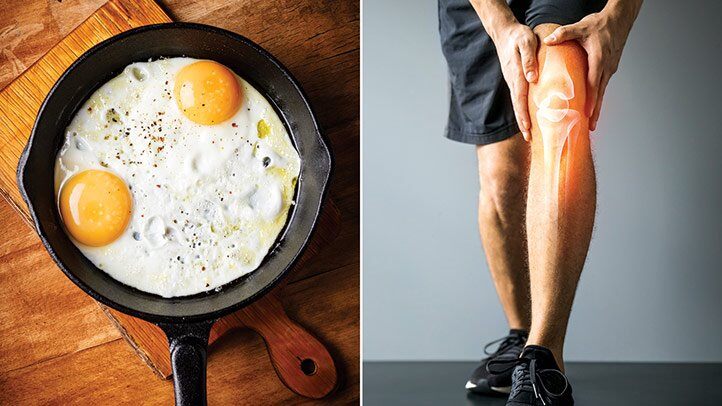Will the Keto Diet Help Ease Joint Pain?
While weight loss can be beneficial for many types of joint pain, the nutrients you eat while you are shedding pounds are the essential ingredients for good health. The ketogenic diet, the buzzworthy high-fat, low-carb diet commonly called keto, is based on the idea that cutting out carbohydrates — the body’s primary source of energy — forces the body to burn fat for fuel, supercharging your weight loss.
But eliminating grains, fruits, many vegetables, as well as other healthy foods from your diet depletes your body of the vitamins and minerals that help keep your body in balance. “It’s not a good choice for people with systemic inflammatory conditions, because it completely goes against the science we know that prevents inflammation in the body,” says Lona Sandon, PhD, RDN, an associate professor in the department of clinical nutrition at UT Southwestern in Dallas, who also has rheumatoid arthritis.
Carrying extra weight isn’t ideal for anybody’s joint health, so deciding to lose weight is a wise choice. But the keto diet is very high in fat — which can help you feel satisfied — and it’s not high in the types of fats that help decrease inflammation, which is the root cause of joint pain. “This diet is higher in the fats that promote inflammation,” says Dr. Sandon. “If your keto diet contains a fair amount of red meat, you will be eating more of the types of saturated fats that increase the inflammatory compounds that make you feel worse.” One type of fatty acid that’s found in higher amounts in red meats promotes the cytokines and leukotrienes that cause more damage and inflammation in the body, according to Sandon.
Plus, eliminating entire food groups from your diet — and in turn essential nutrients — is depriving your body of optimal nutrition. “It is absolutely terrible for people with RA,” says Sandon. “People with RA need more antioxidant vitamins [which are found in fruits and vegetables] that those who do not live with a chronic inflammatory disorder.”
The goal of the keto diet is to get your body into a state of ketosis, which is when your body doesn’t have enough carbohydrates to burn for energy, so it starts to burn fat instead. “If you can get through the first three days to get into ketosis, it can help to shut down appetite and control cravings,” says Sandon. “From a weight loss perspective, it can be effective in the short term. But eventually you do get hungry, and you need to get back to eating regular food again.”
Many experts agree that the Mediterranean diet is advised for people who have RA, as well as other types of arthritis. It emphasizes a plant-based eating approach, loaded with vegetables and healthy fats, including olive oil and omega-3 fatty acids from fish.
It’s also the dietary approach with the most research behind it. A study published in 2017 in the journal Frontiers in Nutrition investigated dietary interventions for rheumatoid arthritis and determined that an ideal meal would include raw or moderately cooked vegetables (lots of greens and legumes), with the addition of spices like turmeric and ginger, seasonal fruits, and probiotic yogurt — all of which are good sources of natural antioxidants and deliver anti-inflammatory effects. They also recommend avoiding processed foods, foods with high sodium levels, oils, butter, sugar, and animal products.
But when it comes to minimizing the symptoms of RA, no one diet works for everyone. “It depends on the person,” says Christine Palumbo, RD, a nutrition expert in Naperville, Illinois. “For some people, gluten can be a trigger. For others, salmon, nuts, or eggplant can be inflammatory.” She suggests that people who have joint pain associated with RA should consider food sensitivity testing or try an elimination diet where you avoid common culprit foods, such as dairy, gluten, nightshade vegetables (which include tomatoes, white potatoes, and bell peppers), and alcohol.









Recent Comments